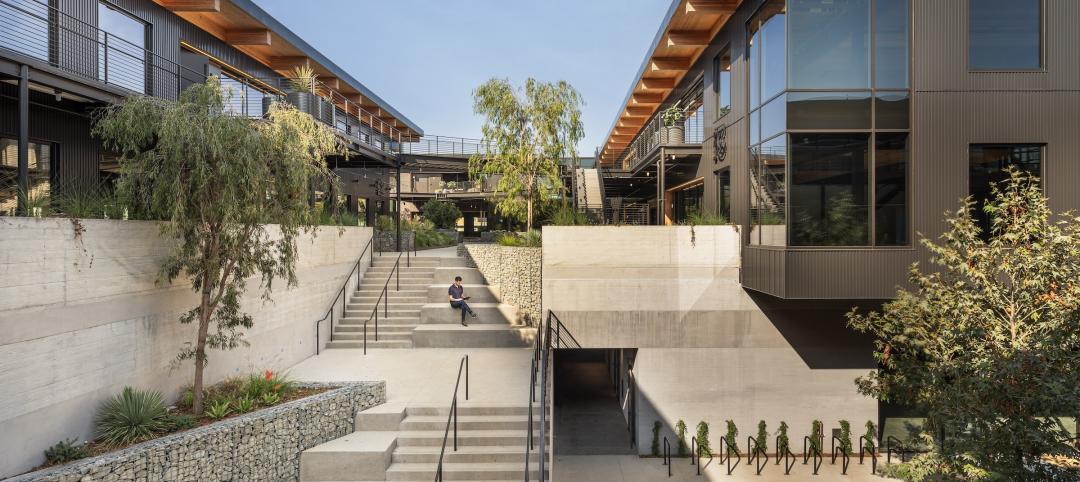DENTON (UNT), Texas — The University of North Texas has received a $2 million grant from the State Energy Conservation Office to install three wind turbines that will feed the electrical grid that provides power to UNT’s new football stadium and other buildings on the west side of Interstate 35E.
The stadium, which will open in September, is the first collegiate stadium designed to incorporate onsite renewable energy. The turbines are expected to be installed by the end of the year.
“The effort by the staff of the UNT System and the university to meet the requirements of the Department of Energy and the State Energy Conservation Office to win the grant for these new turbines underscores our commitment to creating a carbon-neutral campus,” said V. Lane Rawlins, president of UNT. “Our university has a 50-year legacy of environmental research and sustainability and we’re proud to be the first university in Texas to install wind turbines on campus. “
It is estimated that the three wind turbines will offset the energy consumption of Mean Green Village, the area of campus surrounding the new stadium, by about 6 percent and eliminate 323 metric tons of carbon dioxide being emitted annually. The turbines will be visible from I-35E and I-35W providing visual evidence of UNT’s commitment to sustainability.
A web-based monitoring system will provide details on energy production, carbon reduction statistics and empirical data that can be used for both educational and research purposes at UNT. Designed for low wind conditions, the community-scale 100kW wind turbines are well suited for the North Texas region, which has a wind speed average of approximately 12 mph.
Unlike the very large turbines generally found at wind farms, community-scale turbines are considerably smaller and ideal for municipalities, schools, neighborhoods, and universities. The approximate noise level of the turbines is 55 decibels at 40 meters (131 feet), which is equivalent to that of a normal conversation between two people.
“The construction of wind turbines at UNT will be an invaluable asset to the university and surrounding communities,” said Richard Escalante, vice chancellor for administrative services. “The reduction in carbon emissions from the use of fossil fuels will be a collective benefit for the entire North Texas region. Sustainable initiatives, such as the use of renewable energy technologies, ensure that future generations of the UNT and Denton communities are equipped with the necessary tools to continue economic expansion while simultaneously protecting the environment and human health.”
The wind turbines will be located southwest of the new stadium, and aligned approximately parallel to Bonnie Brae Street. The turbines will be on the east side of Bonnie Brae.
Design and construction of the turbines is expected to begin immediately. At its November meeting, the UNT System Board of Regents selected HKS DesignGreen for the design of the turbines and supporting structure. The construction manager will be selected shortly, according to Raynard Kearbey, UNT System associate vice chancellor for system facilities, whose team is overseeing design and construction of the stadium and wind turbines.
“These wind turbines will give UNT a trifecta of benefits,” noted Chris Mundell, sustainable design manager with HKS DesignGreen. “They will be an innovative educational tool for UNT students and faculty. The turbines also will be a symbol of sustainability for all the stadium’s spectators. Lastly, they help offset energy consumption of the new stadium, making it one of the most energy efficient in the country.”
Scheduled to open in September 2011, the new 28,000 seat stadium will feature luxury suites, an amenity-filled club level, and a Spirit Store.
The new stadium will be the centerpiece in UNT's Mean Green Village. In addition to hosting UNT events, it will serve the entire North Texas region as a venue for outdoor concerts, community events, high school games and band competitions.
The new stadium, which will replace 57-year-old Fouts Field, is designed by award-winning architects HKS Sports & Entertainment Group, the firm that designed the new Dallas Cowboys stadium. The UNT System will be seeking LEED Gold or Platinum certification. If the project is awarded LEED Platinum, it will be the first of its type to achieve this rating in the country.
Related Stories
Sustainability | Sep 18, 2024
3 living buildings made by a living practice
Prompting humans to reexamine our relationship to the environment, architecture creates the opportunity for us to physically experience ideas of beauty, performance, and structure through the distinct lens of place.
3D Printing | Sep 17, 2024
Alquist 3D and Walmart complete one of the nation’s largest free-standing, 3D-printed commercial structures
Walmart has completed one of the largest free-standing, 3D-printed commercial structures in the US. Alquist 3D printed the almost 8,000-sf, 20-foot-high addition to a Walmart store in Athens, Tenn. The expansion, which will be used for online pickup and delivery, is the first time Walmart has applied 3D printing technology at this scale.
Retail Centers | Sep 17, 2024
Thinking outside the big box (store)
For over a decade now, the talk of the mall industry has been largely focused on what developers can do to fill the voids left by a steady number of big box store closures. But what do you do when big box tenants stay put?
Government Buildings | Sep 17, 2024
OSHA’s proposed heat standard published in Federal Register
The Occupational Safety and Health Administration (OSHA) has published a proposed standard addressing heat illness in outdoor and indoor settings in the Federal Register. The proposed rule would require employers to evaluate workplaces and implement controls to mitigate exposure to heat through engineering and administrative controls, training, effective communication, and other measures.
Codes and Standards | Sep 17, 2024
New California building code encourages, but does not mandate heat pumps
New California homes are more likely to have all-electric appliances starting in 2026 after the state’s energy regulators approved new state building standards. The new building code will encourage installation of heat pumps without actually banning gas heating.
Mass Timber | Sep 17, 2024
Marina del Rey mixed-use development is L.A.’s largest mass timber project
An office-retail project in Marina del Rey is Los Angeles’ largest mass timber project to date. Encompassing about 3 acres, the 42XX campus consists of three low-rise buildings that seamlessly connect with exterior walkways and stairways. The development provides 151,000 sf of office space and 1,500 sf of retail space.
Education Facilities | Sep 16, 2024
Hot classrooms, playgrounds spur K-12 school districts to go beyond AC for cooling
With hotter weather occurring during the school year, school districts are turning to cooling strategies to complement air conditioning. Reflective playgrounds and roads, cool roofs and window films, shade structures and conversion of asphalt surfaces to a natural state are all being tried in various regions of the country.
Office Buildings | Sep 16, 2024
Maximizing office square footage through ‘agile planning’
Lauren Elliott, RID, NCIDQ, Director of Interior Design, Design Collaborative, shares tips for a designing with a popular and flexible workspace model: Agile planning.
3D Printing | Sep 13, 2024
Swiss researchers develop robotic additive manufacturing method that uses earth-based materials—and not cement
Researchers at ETH Zurich, a university in Switzerland, have developed a new robotic additive manufacturing method to help make the construction industry more sustainable. Unlike concrete 3D printing, the process does not require cement.
Libraries | Sep 12, 2024
How space supports programming changes at university libraries
GBBN Associate Sarah Kusuma Rubritz, AIA, uses the University of Pittsburgh's Hillman Library to showcase how libraries are transforming to support students’ needs.
















